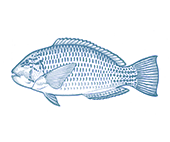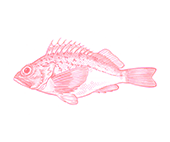




- Better Choice
Wild Caught
Region:
NSW
- Mud crabs are caught in recreational and commercial fisheries across northern Australia.
- Mud crab populations appear healthy in NSW.
- Marine parks are known to effectively protect mud crab populations, and are in place in parts of the northern NSW coast where the fishery operates.
- The pot fishing methods used have low habitat impacts and bycatch.





Mud crabs are highly regarded as eating crabs, a favourite for a table centrepiece whether steamed, stir-fried, or cooked in a curry or sauce. Crabs can be purchased whole (cooked or raw) or as picked and frozen meat. To cook whole crabs, crack any large legs or claws with the back of a knife and then steam, boil or stir-fry. Alternatively, crabs can be broken into equal sized pieces and dropped into a soup, stew or curry. Crabs are cooked when the shell goes a vivid orange or red colour and meat pulls away from the shell with ease. Cooked and picked crabmeat can be tossed through a simple pasta or noodle dish, or used for a seafood cocktail, salad or sandwich.
- NSW Estuary General Fishery (119t in 2019)
Mud Crabs are found in tropical and sub-tropical coastal regions in the Indo-West Pacific. In Australia it has been recorded from Shark Bay in Western Australia to Port Hacking, south of Sydney.
Mud crabs are mainly caught using crab pots and traps in coastal estuaries in northern NSW, which are lowered to the seafloor and remain in place until they are lifted up for harvest. Impacts on habitat are minimal.
Mud crab populations in NSW have recently been subject to a scientific stock assessment for the first time, which is welcome. The mud crab stock is shared with a much larger QLD-managed fishery, and most of the breeding population is likely to originate from there. Management is not highly collaborative between jurisdictions, which is of concern. However, there is adequate evidence that the NSW part of the population is in healthy condition.
The equipment used is effective at targeting mud crabs, resulting in little else being caught, and if caught can be released alive. While the fishery has not reported significant interactions with endangered wildlife, and is not likely to pose a serious risk to them, there is no recent reliable and verified data to confirm this.
Marine parks likely provide an important additional degree of protection for Mud Crab populations, other species and habitats across the fishery. It is seriously concerning that the NSW Government is actively considering weakening these marine park protections.


